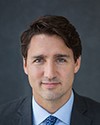Good afternoon, my name is Judith Baxter.
I'm very pleased to have been invited to discuss ideas for the celebration of Canada's 150th anniversary, especially from a rural point of view. I represent a small community museum, the John Fisher Memorial Museum, which is part of the mandate of Kingston Peninsula Heritage Inc. The museum is located in the basement of an active school—from kindergarten through grade eight—in the heritage district of Kingston, New Brunswick.
As Kingston Peninsula Heritage Inc. is a totally volunteer organization and a member of the Canadian Museums Association, I would first like to say that we are huge supporters of the CMA proposal for the matching donation program, the Canadians Supporting their Museum Fund. Kingston Peninsula Heritage Inc. has also been a recipient of a Young Canada Works in Heritage Organizations program, and we support the CMA's effort to have these funds increased.
May I say that I clearly remember the 100th anniversary in 1967. I went to Expo. I hauled kids there. John Fisher spoke at our local 1789 Anglican Church as one of his stops on his cross-country tour, talking about small-town Canada in his capacity as Mr. Canada.
In 1967 the centennial farm designation was a great success, especially in our area. Each century farm was given a plaque, and there are even a few visible today as you drive around the country roads.
The family farm has been in decline since the 1967 celebrations. However, in recent years there has been a growth in small organic farms, which are attracting a younger generation of farmers. Located on the Kingston peninsula is a Saturday morning farmers' market, which works on the premise of 60% farm produce/product. In support of this small but growing farm sector, and since there are many such markets across the country that are highly supported by the general population and viewed as destination shopping, I suggest that these locations could be targeted as areas for celebrating rural Canada.
How might federal funds be directed? Please, let's not have any posters. A poster is at best a one-time waste of your dollars. A poster is quickly disposable. Since I suspect that in this economic climate there will not be an appetite for large-scale capital projects, consider something lasting and effective like a celebration kit.
Many years ago, Kingston Peninsula Heritage Inc. purchased cloth bunting—red, white, and blue fabric, very thin material. We have yards of it and we decorate everything. The bunting that is available for events now is plastic and is a one-shot-use expense. By packaging a celebration kit of reusable items—bunting, flags, banners, etc.—and including ideas on how these might be applied for local use you would be creating a visual expression of celebration across the country. A kit can be reused and recycled. These same celebration kits could be made available to museums, farm markets, schools, legions, etc.
In 1967 Canada was a different place, less corporate and more communal. The country was just beginning to discover and celebrate the diversity of its people, but in 2017 we may work to discover why we are all Canadians and celebrate being Canadian with less emphasis on our diversity. One way this may be approached is by telling the story of why we are Canadians and how this concept of one country developed; how people from differing backgrounds, financial status, and cultures were able to come to a fair and equitable consensus.
Why has telling the federal story been lost on our youth? There must be a way to highlight the story of the Fathers of Confederation, the arguments for and against Confederation, and what was taking place on the world's stage that brought about these discussions. How might federal funds facilitate this action?
In discussion with a friend, the following idea surfaced—six degrees of separation from our Fathers of Confederation. We saw this as a social media activity, hopefully targeting a youthful demographic. Perhaps this is an area that could be partnered with a RIM or a Rogers corporation for their expertise in design and promotion. Perhaps the corporate sponsor could run a competition for development of the program through tech schools.
Needless to say, this concept needs some fleshing out. This project would, however, have overtones of genealogy as well as social science. It may well be a project that may interest an online genealogy server like ancestry.ca.
The John Fisher Memorial Museum opened in 1982 and is only part of what this small community volunteer organization does, as is true with all community organizations. Located on a peninsula, the community has been saved from urban sprawl, as transportation is serviced by a ferry system. We have the advantage of being rich in vistas, built heritage, and low population. We are, however, cursed by being located in a local service district without municipal funding, nor have we businesses or deep pockets from which to draw much-needed funds.
Besides the museum, our mandate covers a heritage river lighthouse, an 1810 cottage in which we operate a tea room and gift shop, an artifact collection of 3,449 items, and a heritage garden that attracts a great deal of day-trip attention. We operate through the summer with federal and provincial student employment grants. These students are taught everything from accessioning artifacts to doing genealogy research, dealing with the public as tour guides, or waiting tables. They learn to sell in the gift shop and cook in the kitchen. Each becomes well versed in telling the story of the Kingston peninsula, gaining many skills through the summer and developing a pride of place.
How might federal funds aid in what we do? Our biggest hurdle is renewing an aging volunteer organization. This is an area where the CMA's Canadians Supporting their Museums Fund would be of great benefit to our organization. This shared donor giving may also encourage more volunteer participation, as the museum sector is seen to be an honourable contributor to the Canadian way of telling each of our stories.
Our second hurdle is accessing funds already available to small museum organizations. All the available programs at present require the organization to have at least one full-time employee. At present and in the foreseeable future, any funds we raise or have donated go to maintaining the heritage structures we own.
How we will celebrate the 150th anniversary of this beautiful country? In the past, we have celebrated the landing of the Loyalists with parades, teas, and special exhibits. We celebrated the provincial bicentennial with folk festivals, built heritage, and special exhibits. We celebrated the millennium by having the crossroads at Kingston—which include the 1789 church with a Loyalist graveyard, the 1788 rectory, the 1788 Union House, the 1810 Carter House, and the 1910 Macdonald Consolidated School—designated a provincial historic district.
Last summer, in celebration of the first European community in New Brunswick, the 400th anniversary, we held a cairn rededication on Catons Island in the Saint John River.
This year, in celebration of the War of 1812, we are supplying a heritage choir for the various celebrations that will be taking place across the province.
As volunteers, we are adept at working on a shoestring and at the last moment. I can guarantee that with your support and, if necessary, without your support, we will be celebrating the 150th anniversary of Canada, for the simple reason that in the museum community, we remember our diversity and celebrate our heritage. It's our passion.
I thank you for this opportunity.




